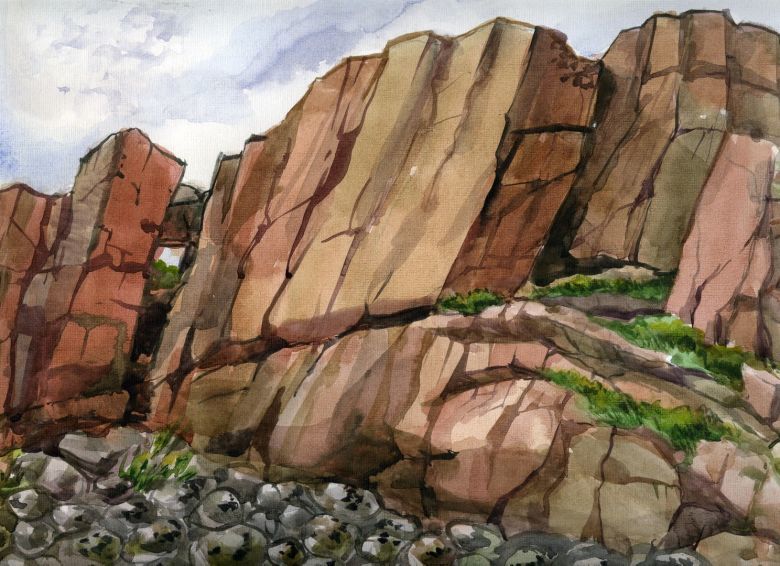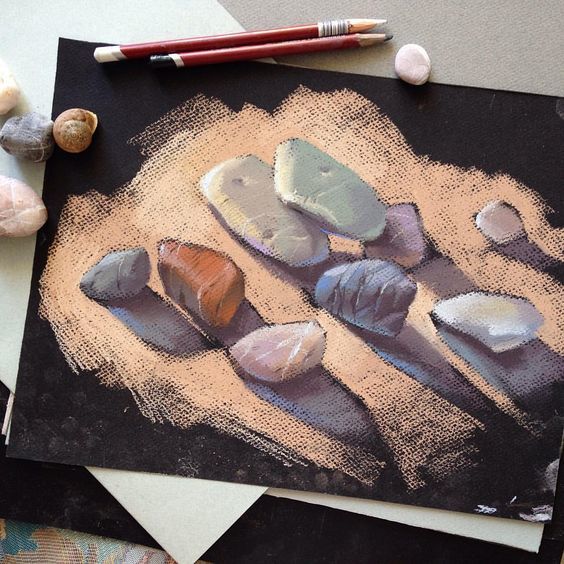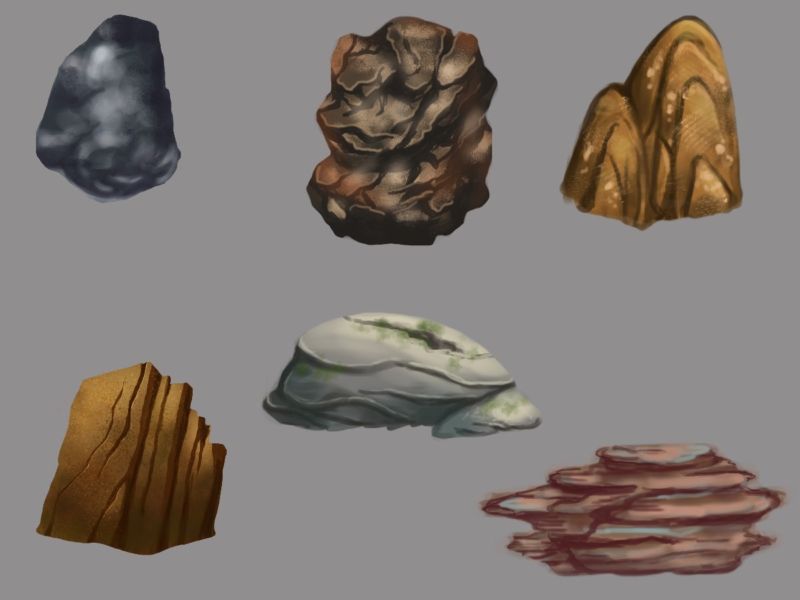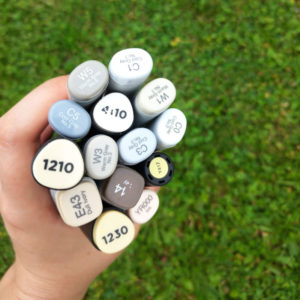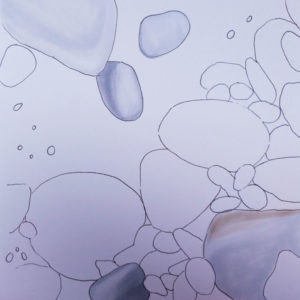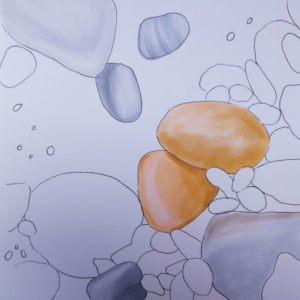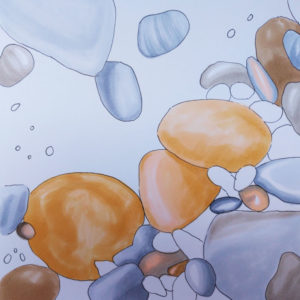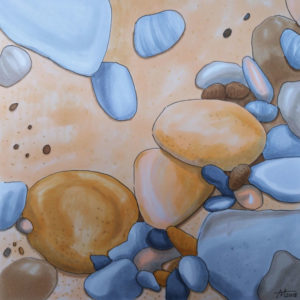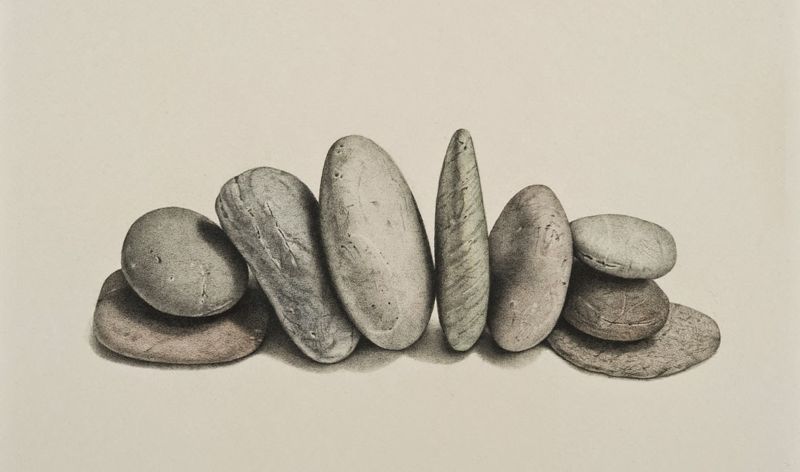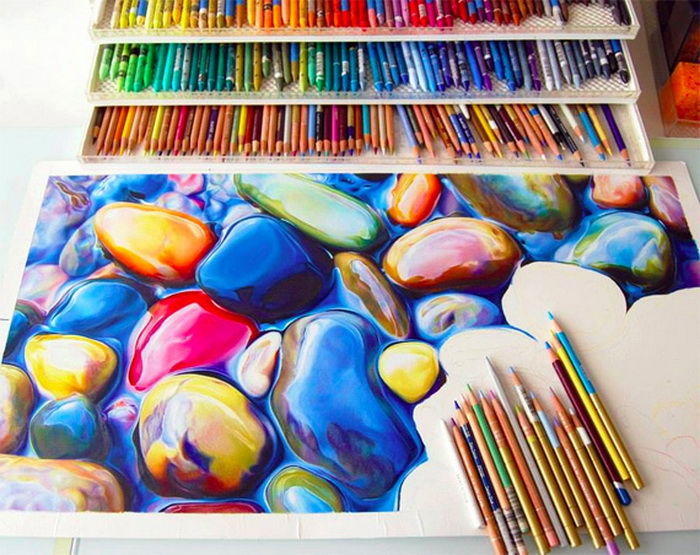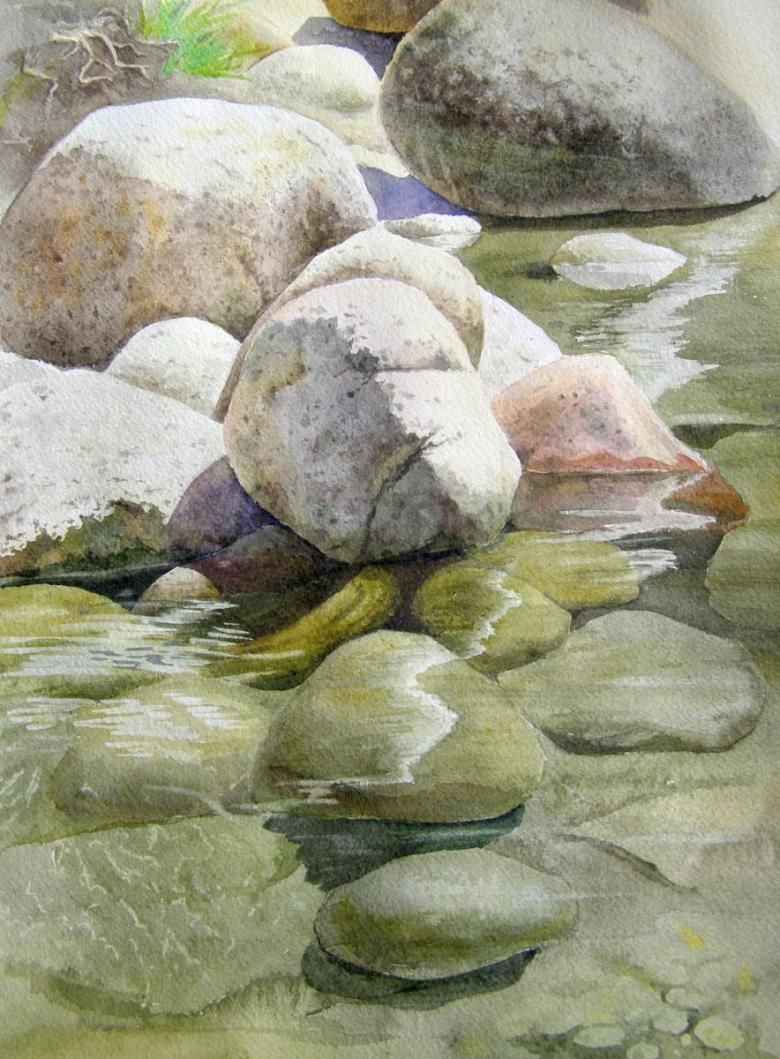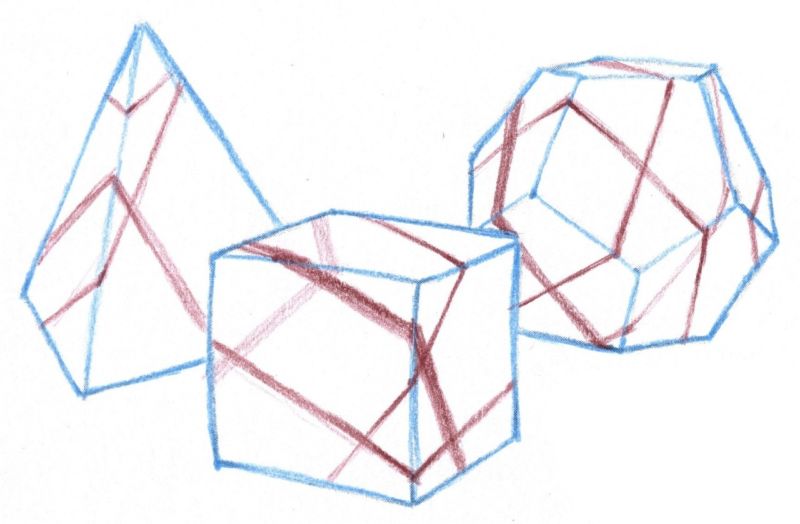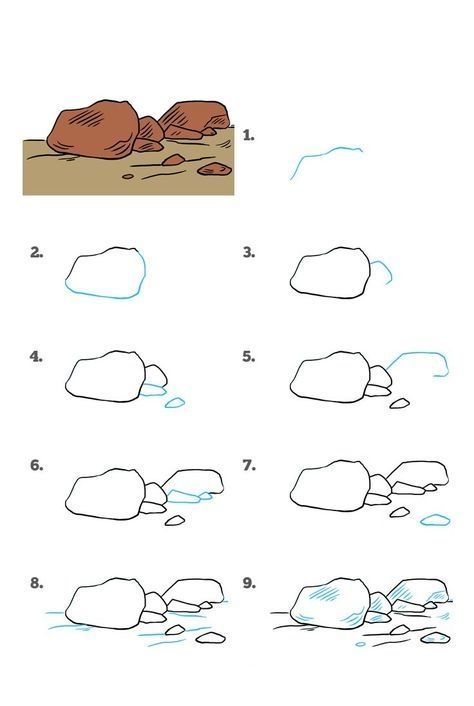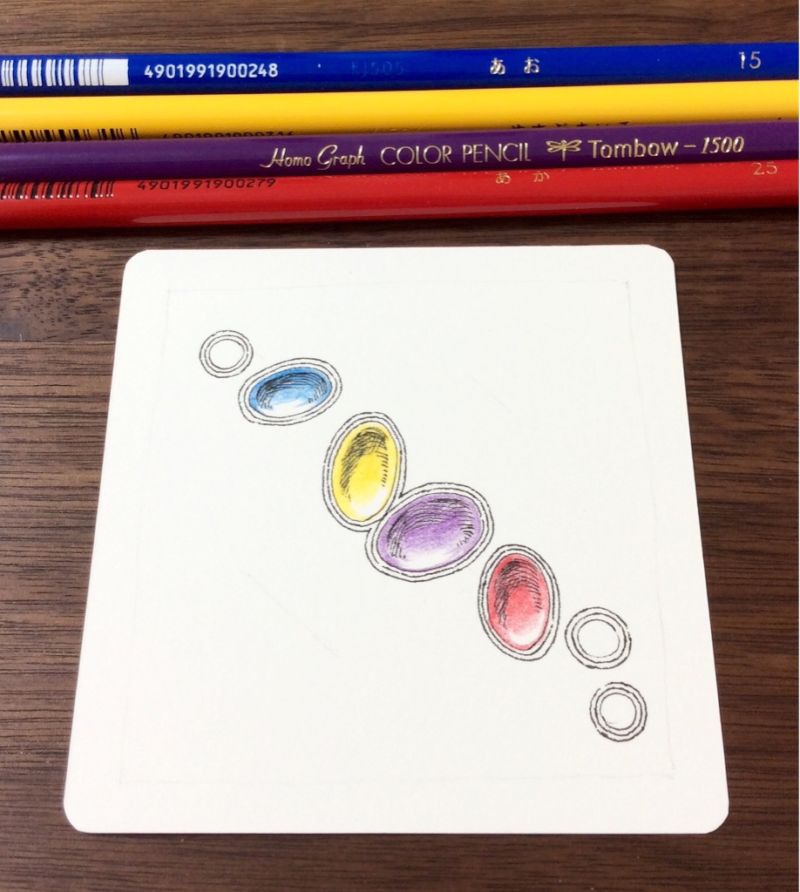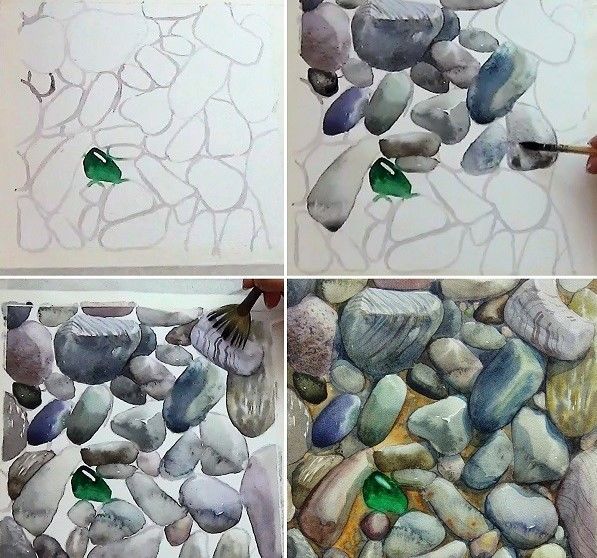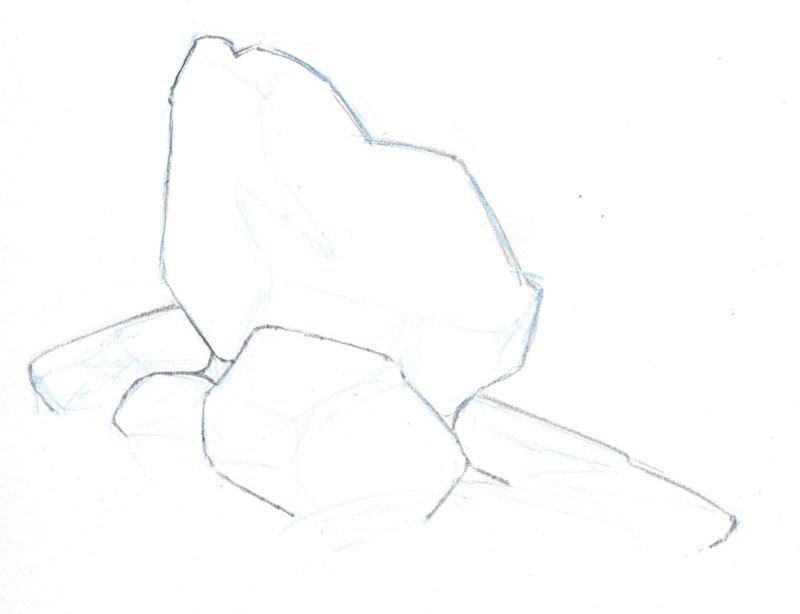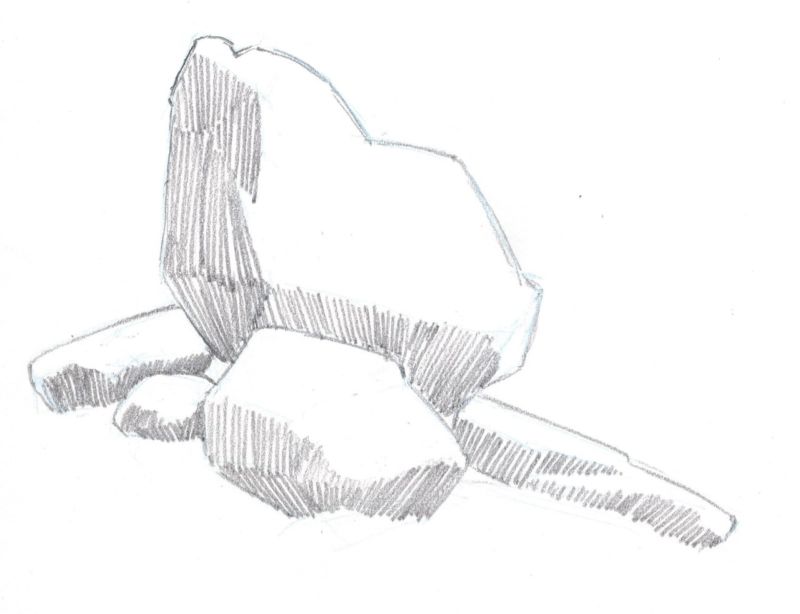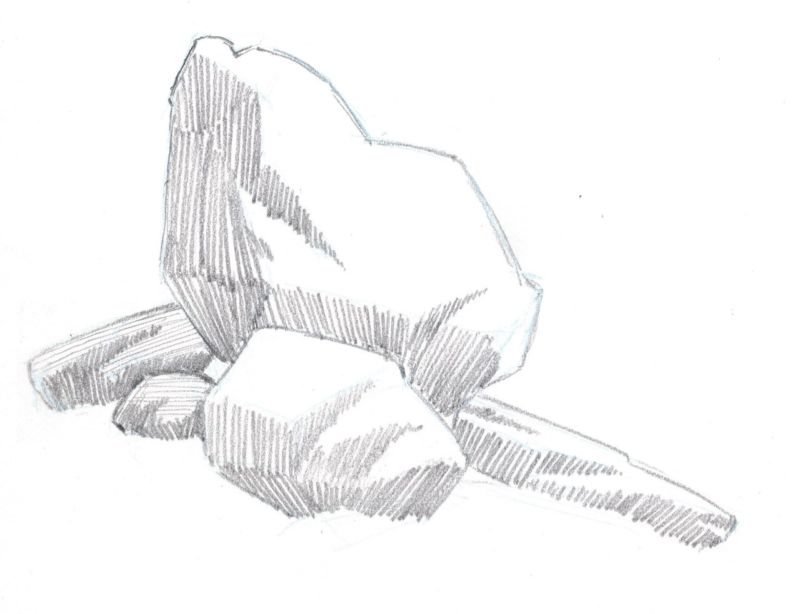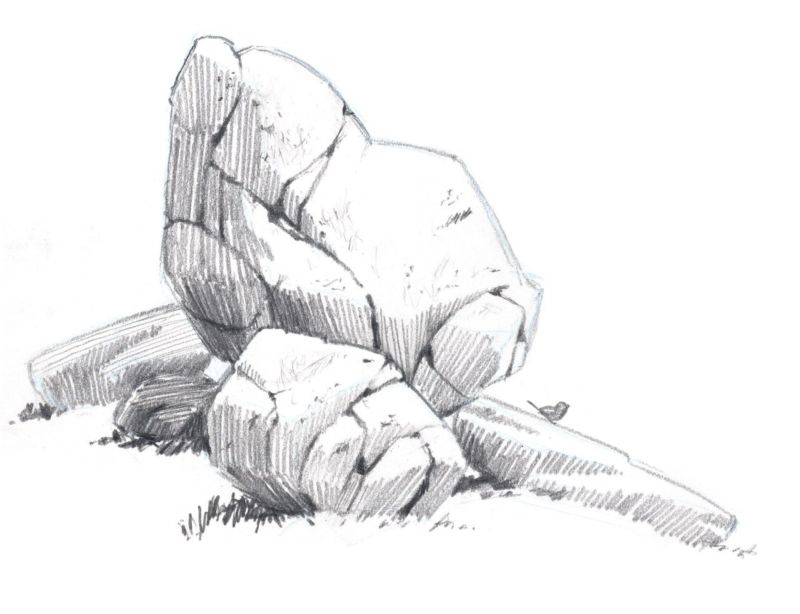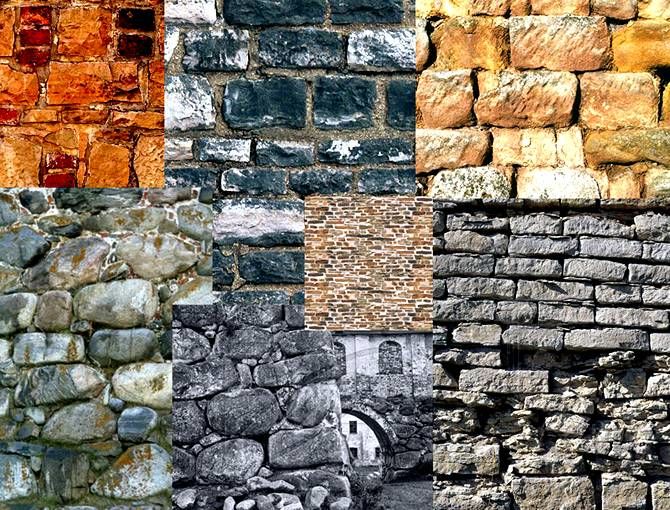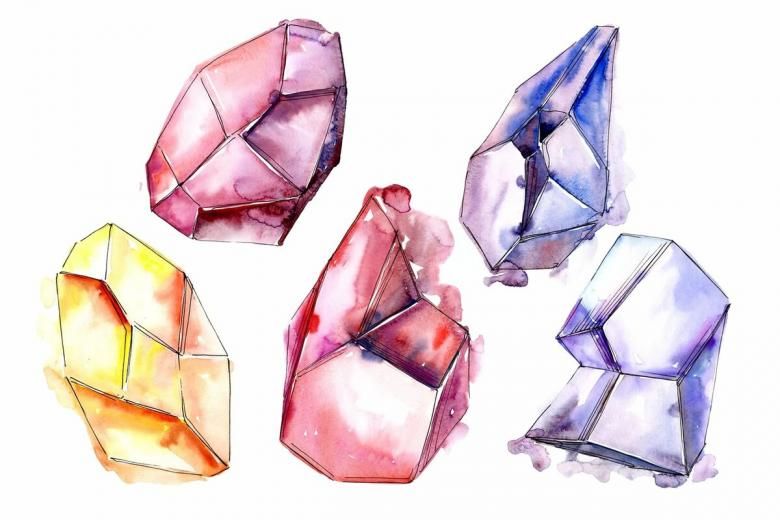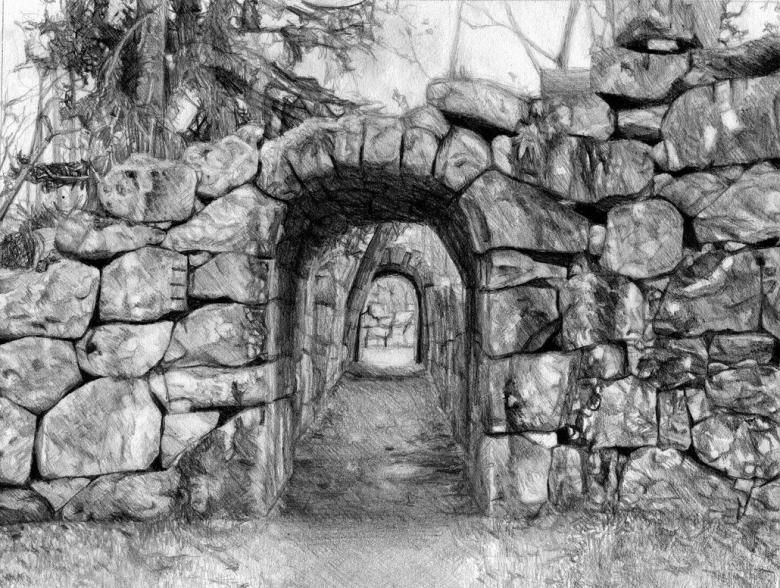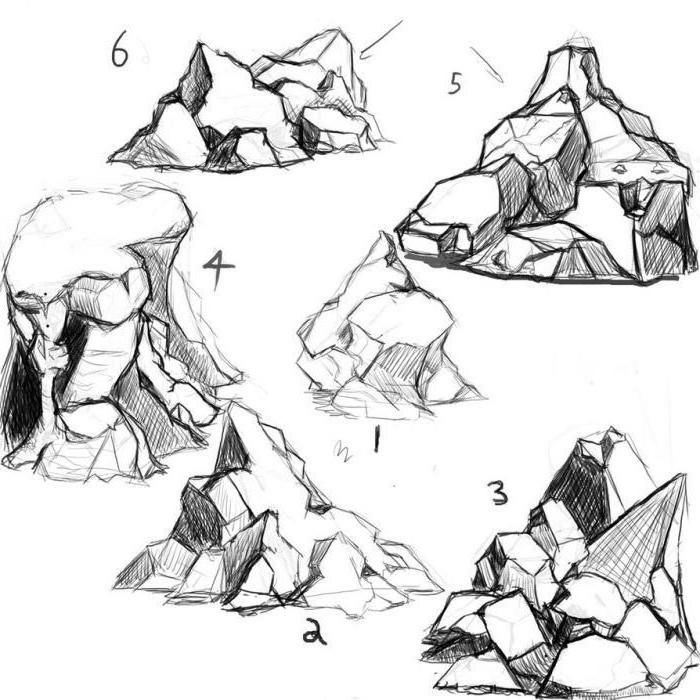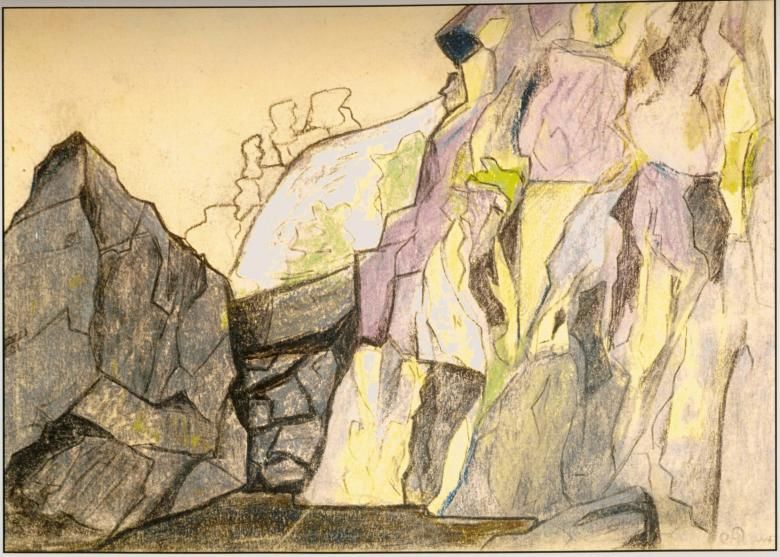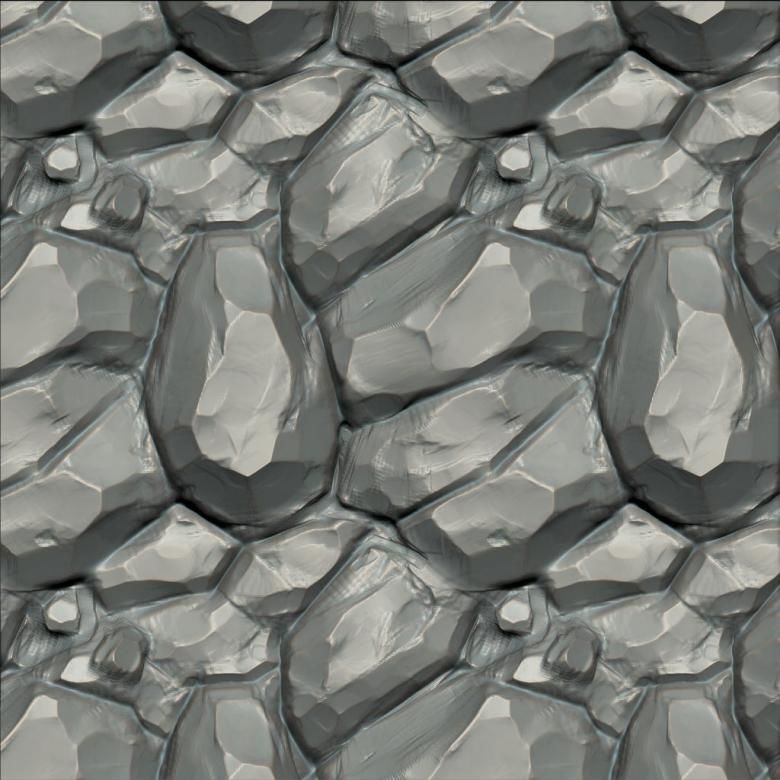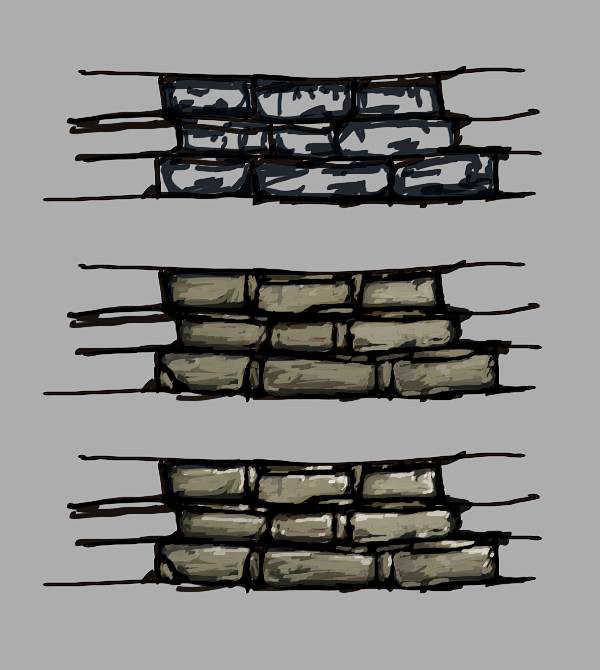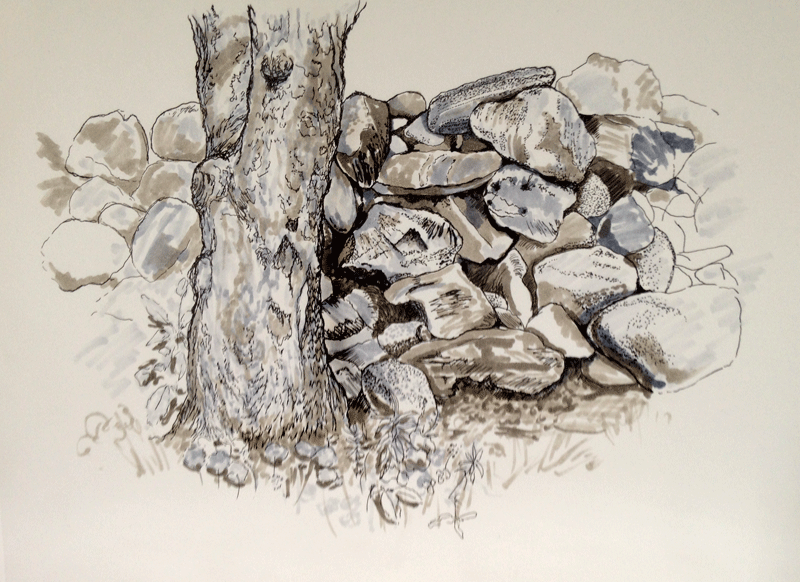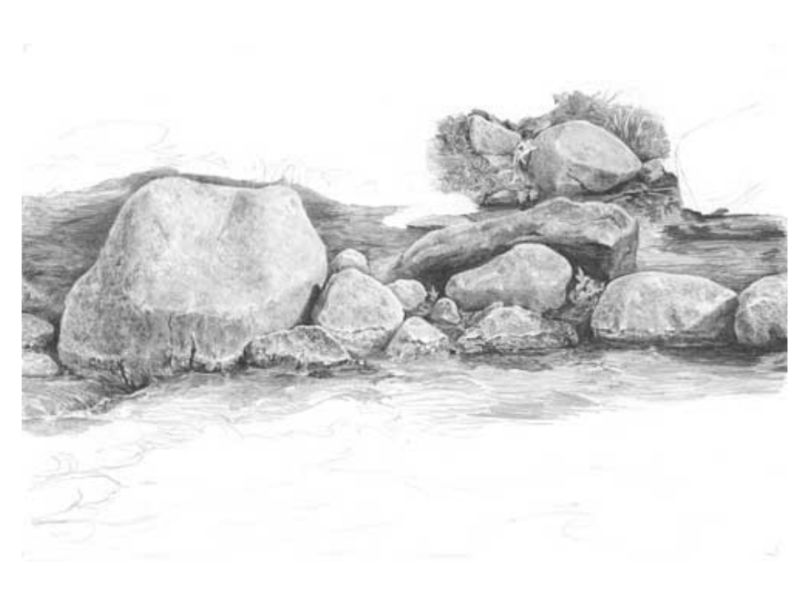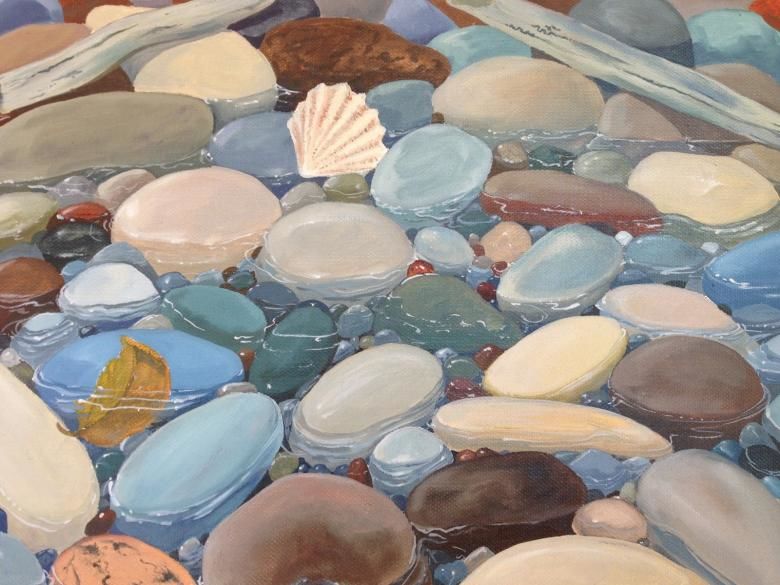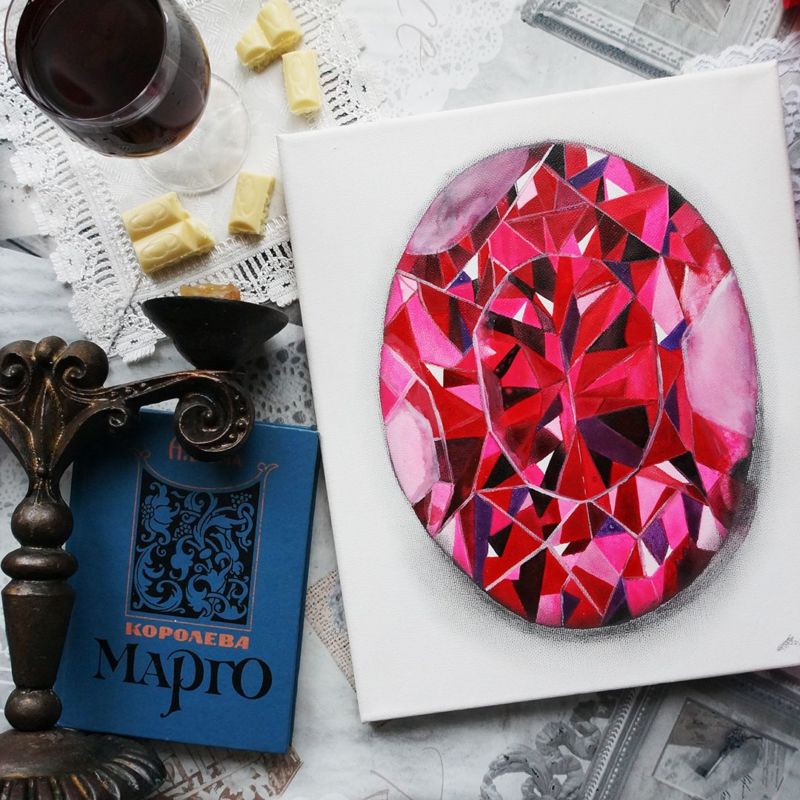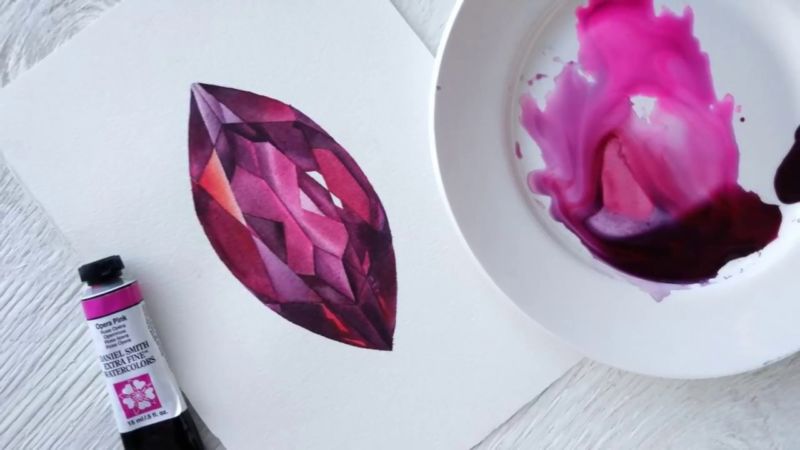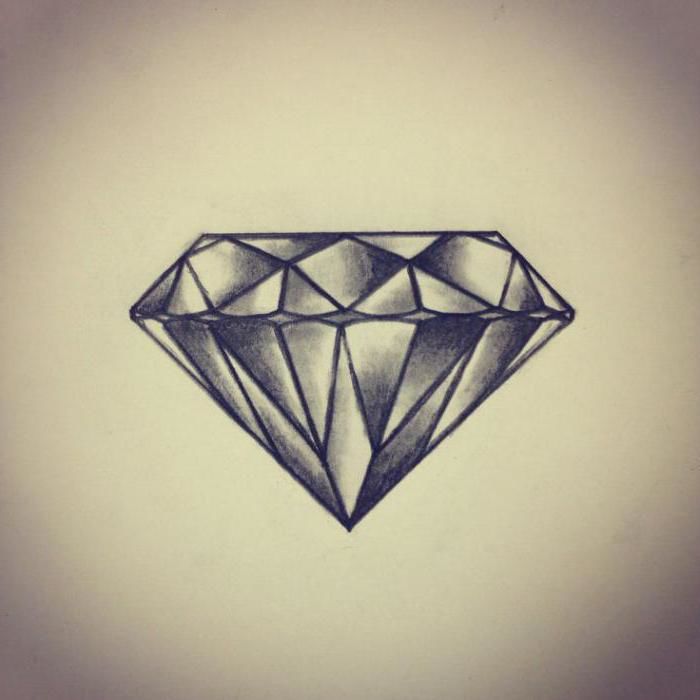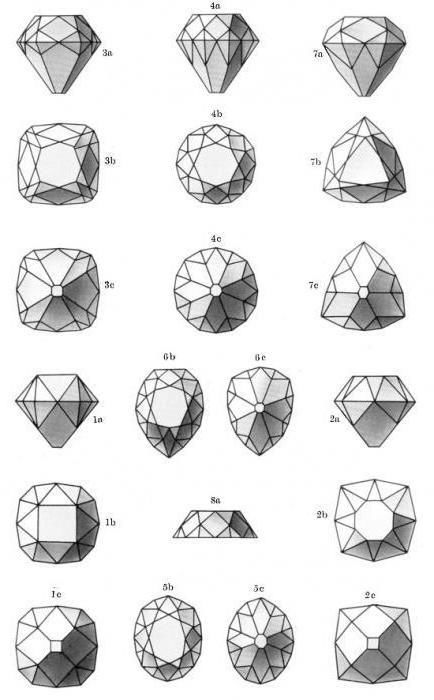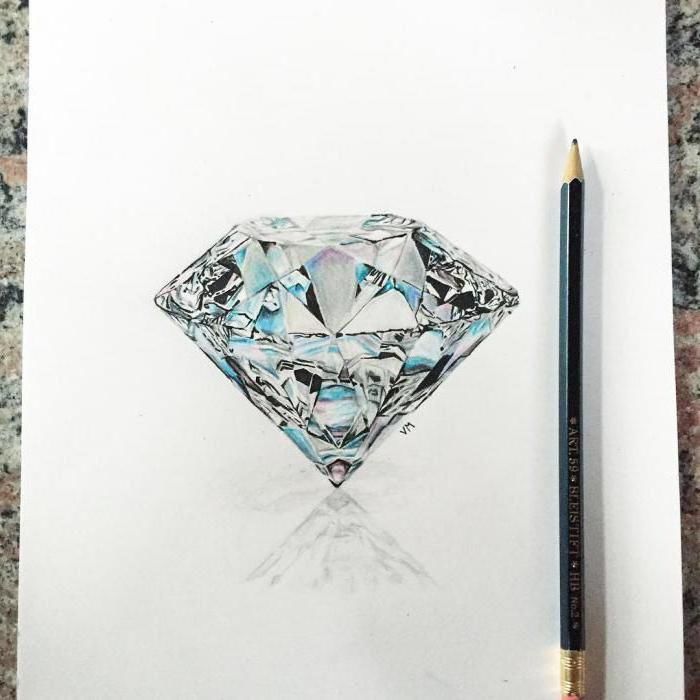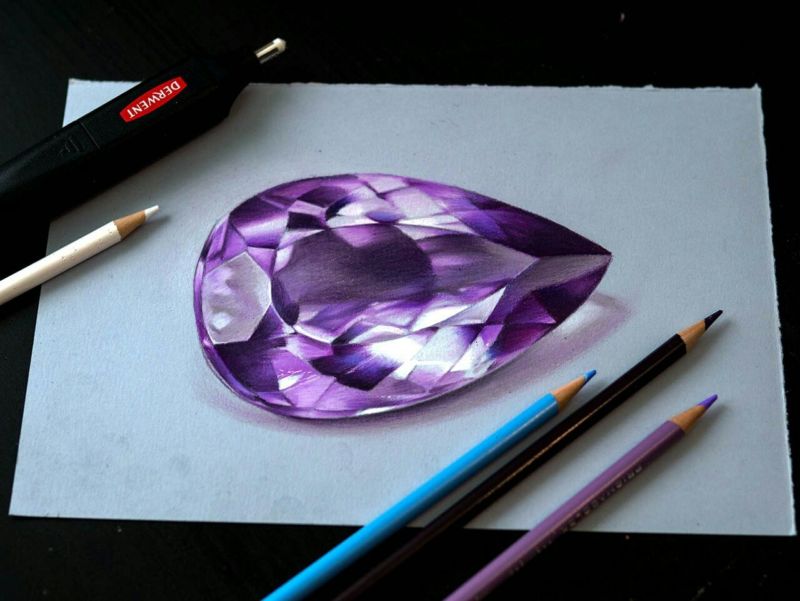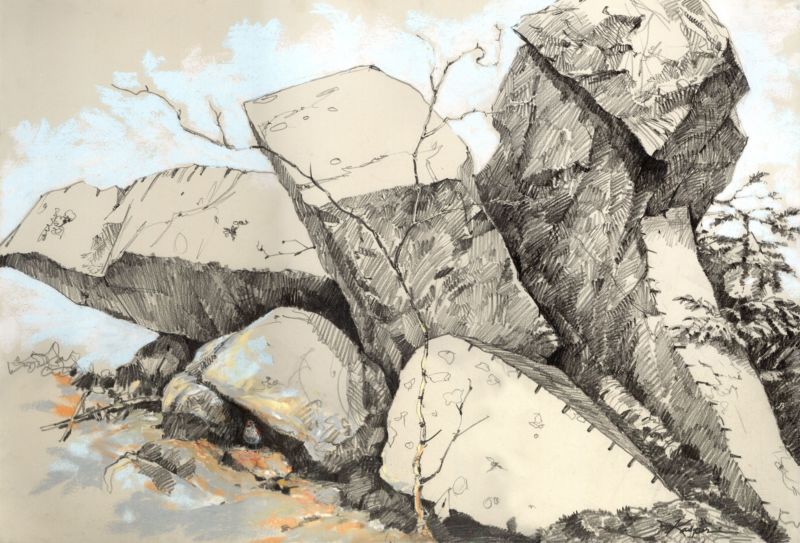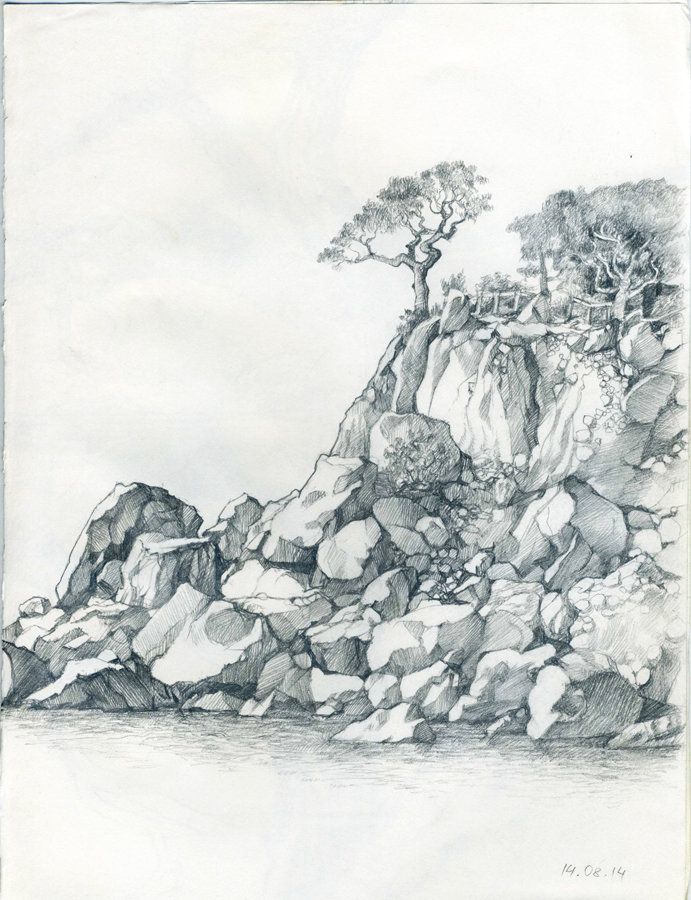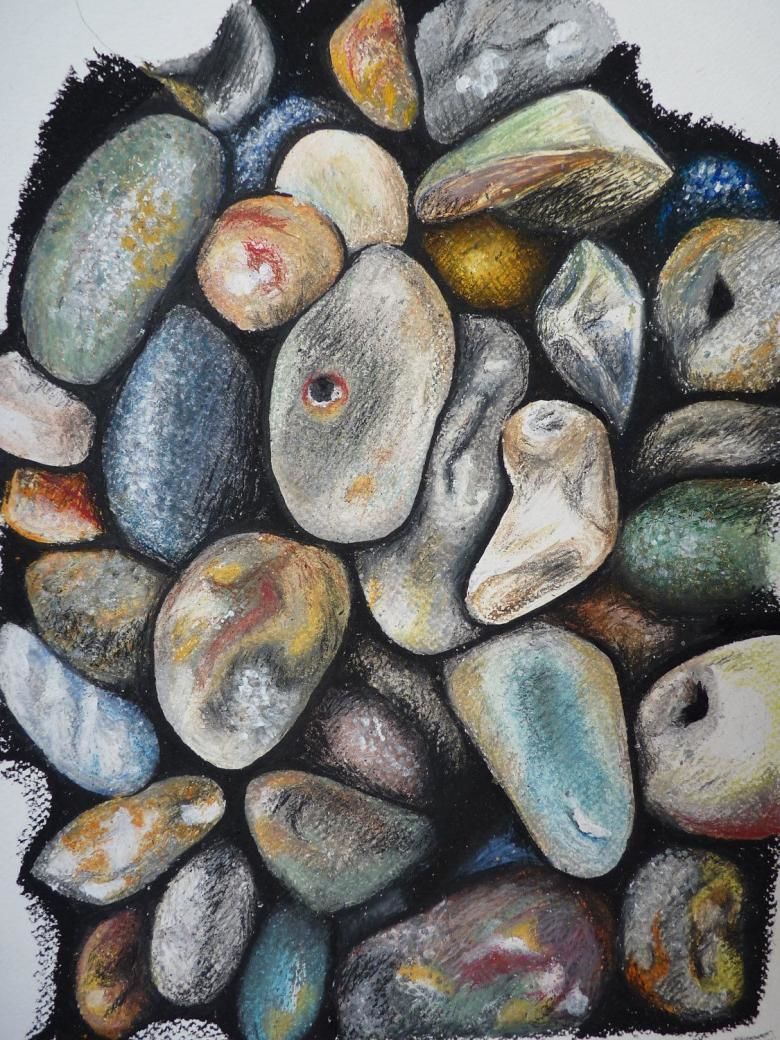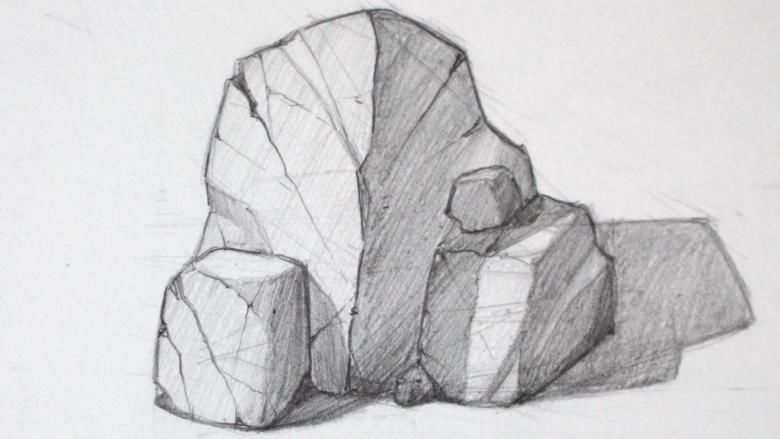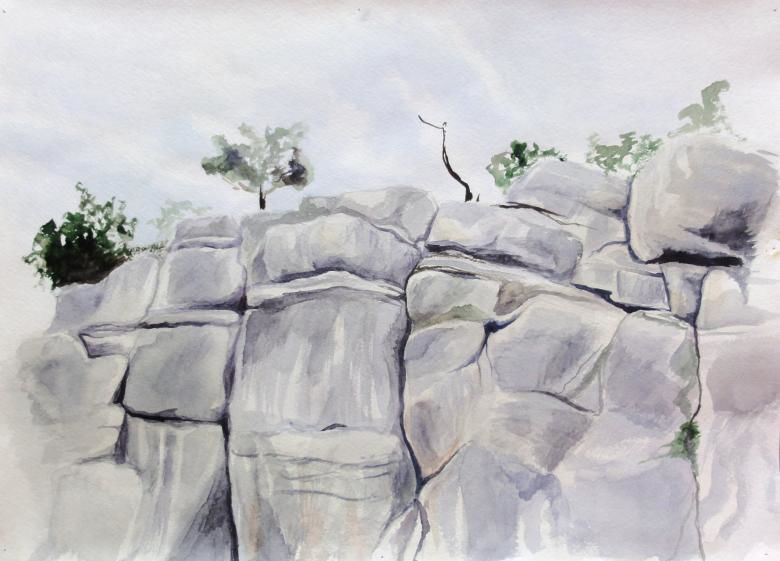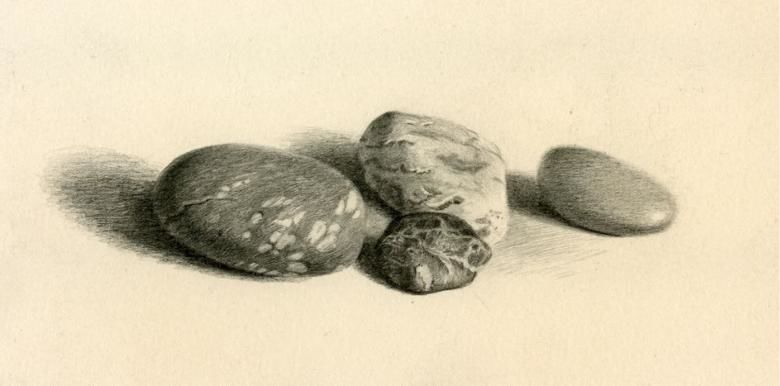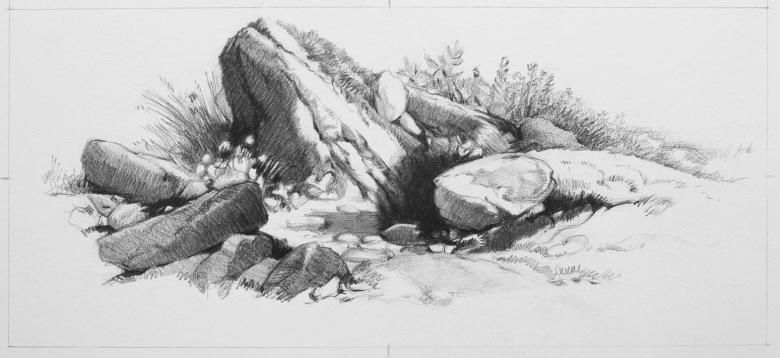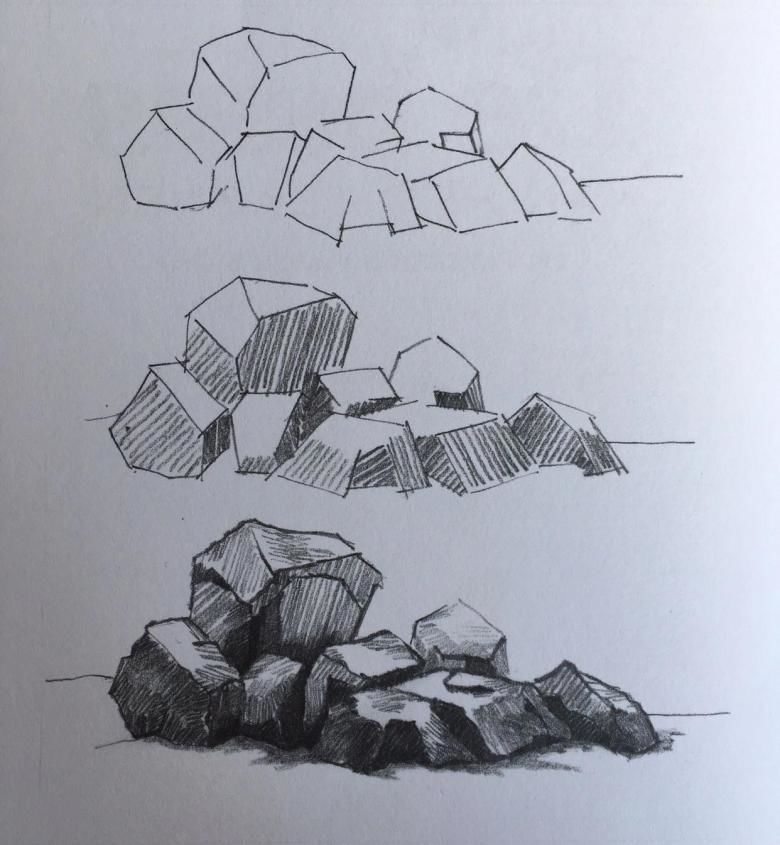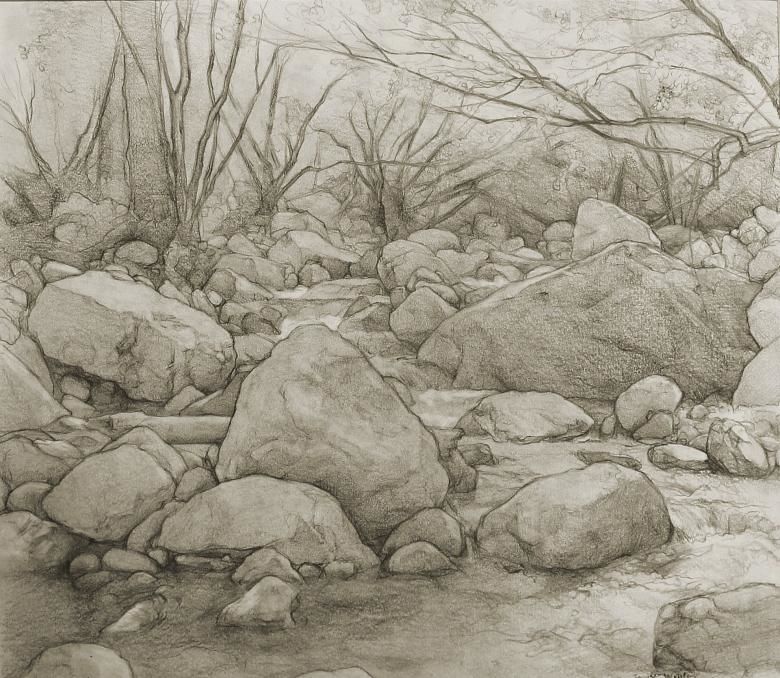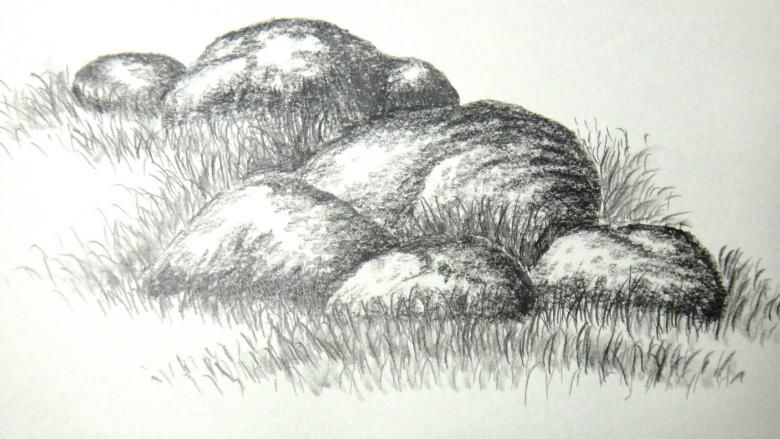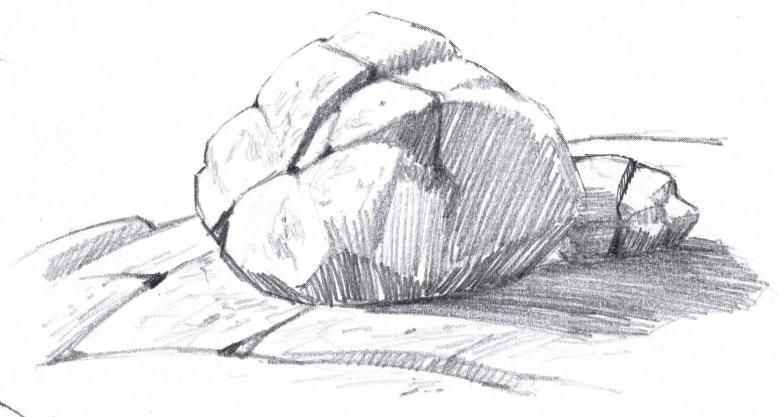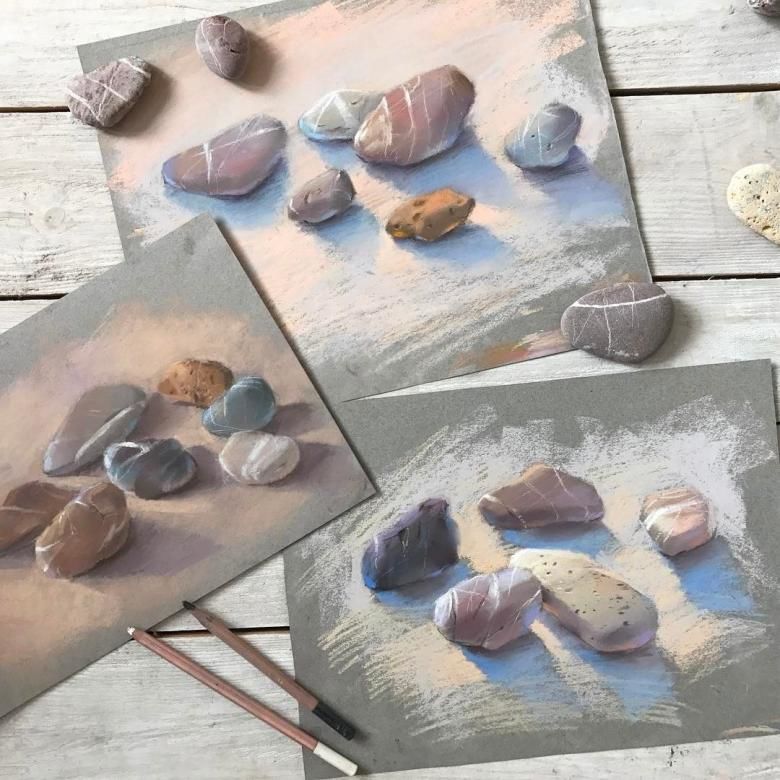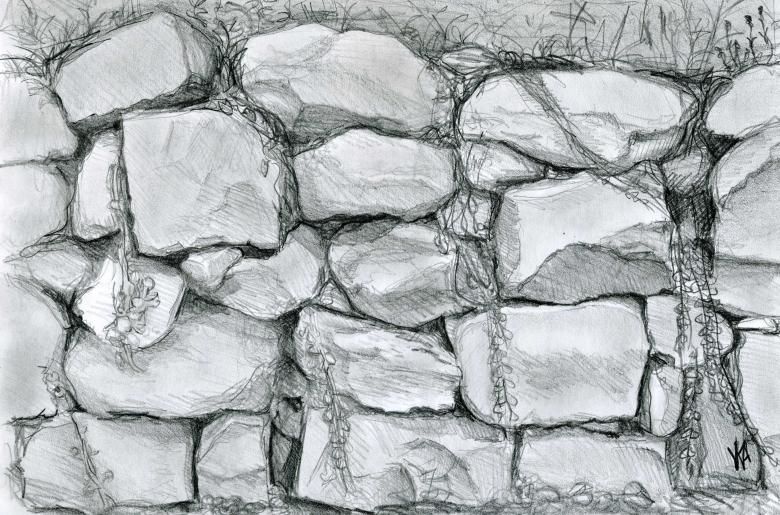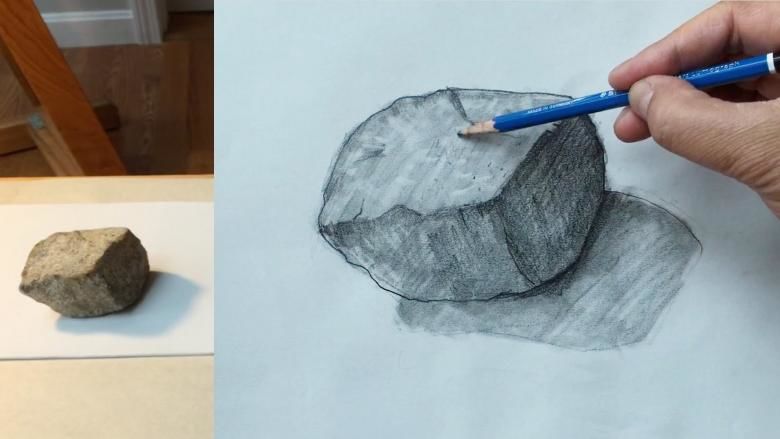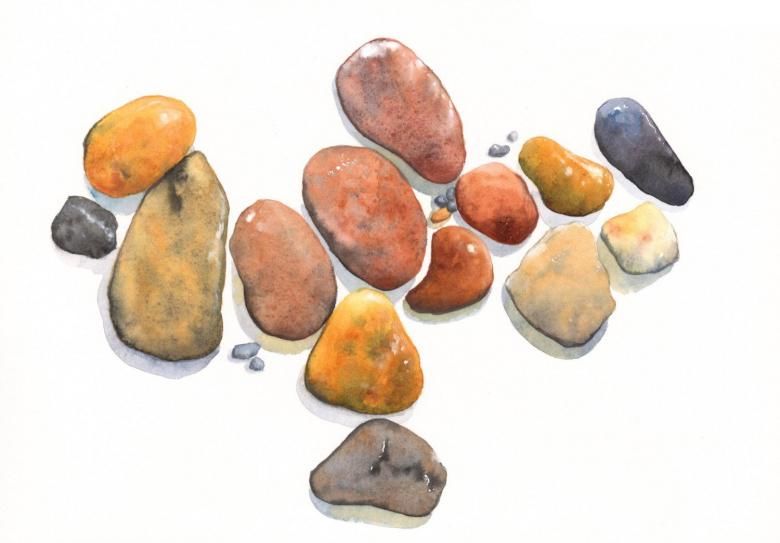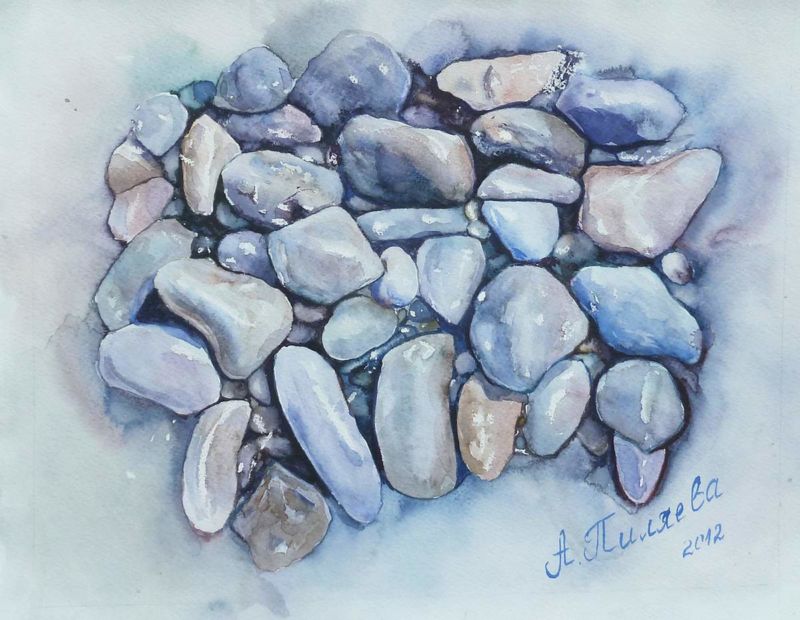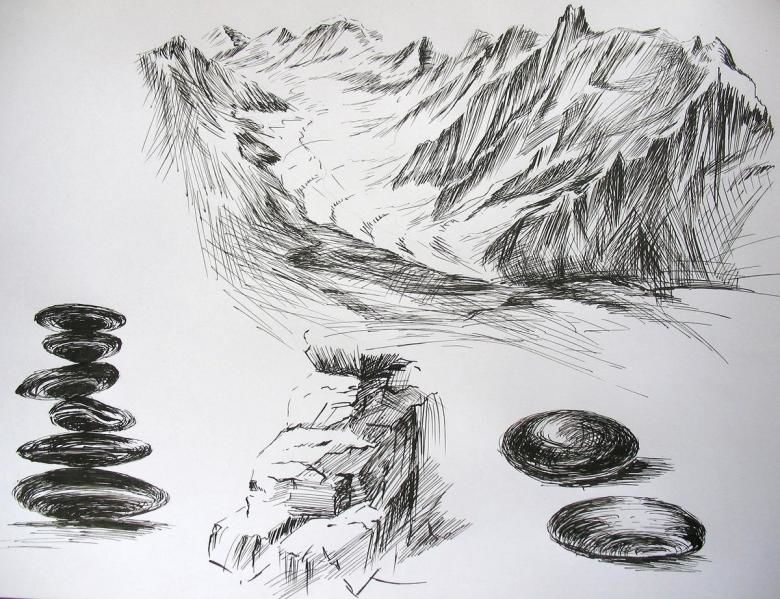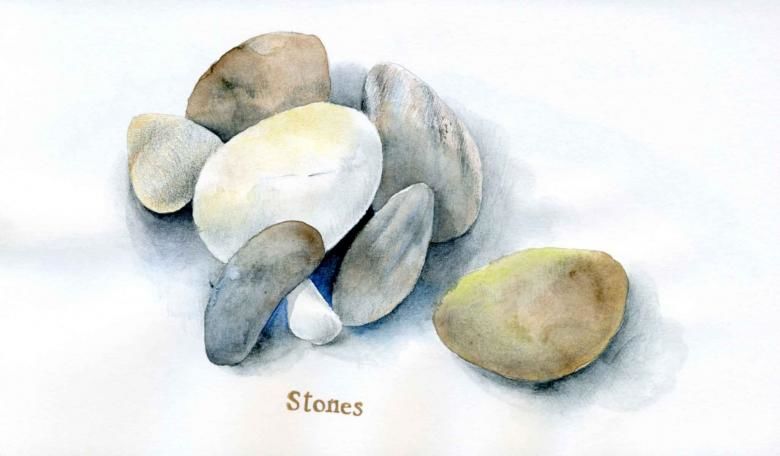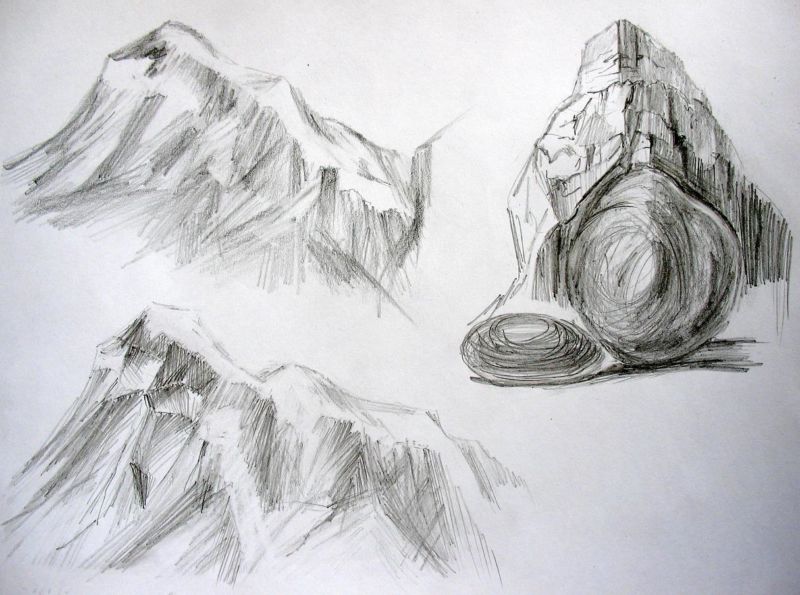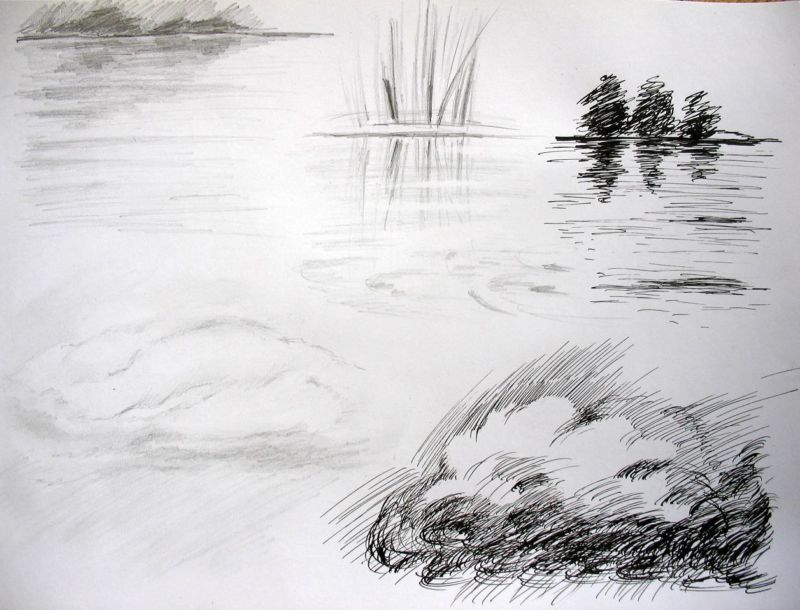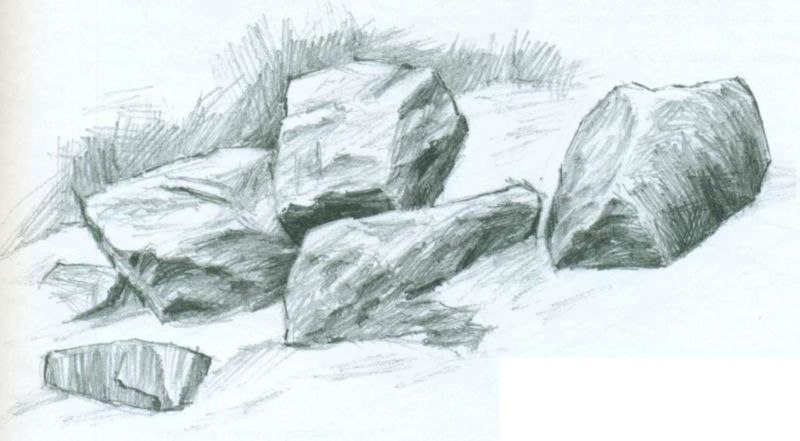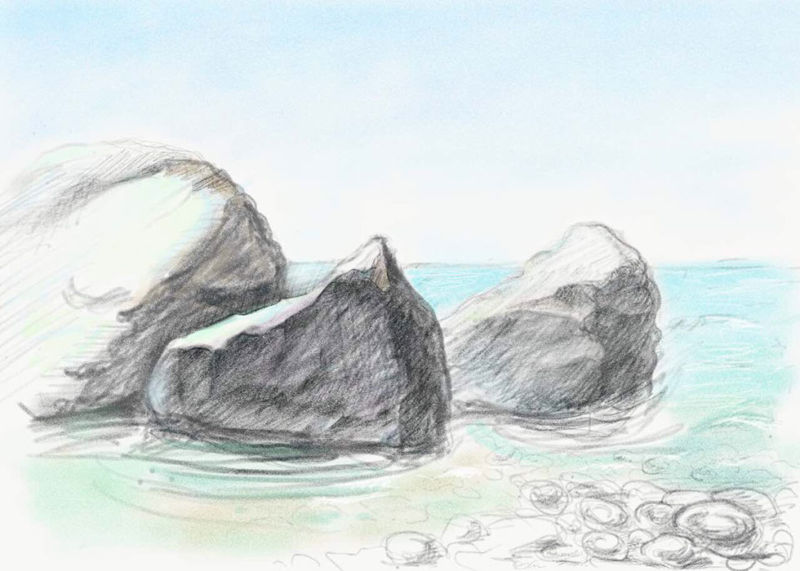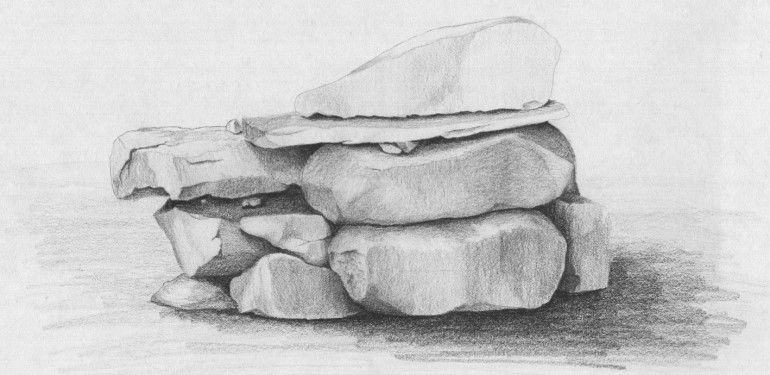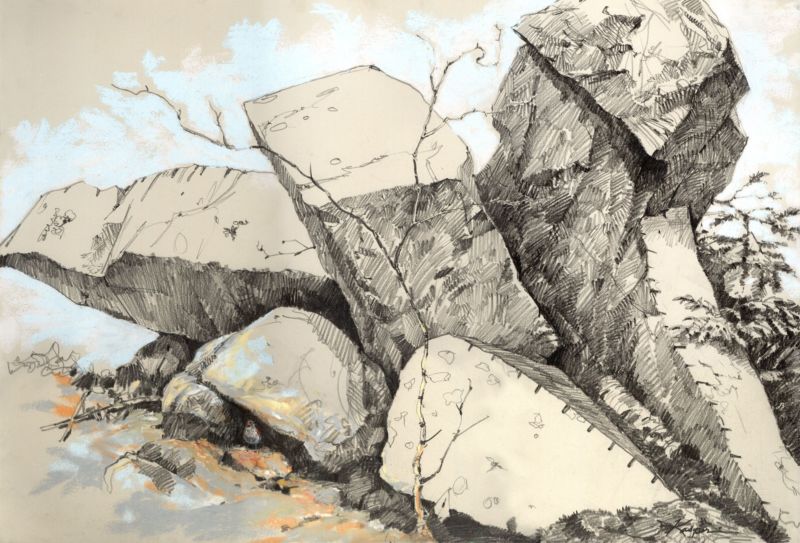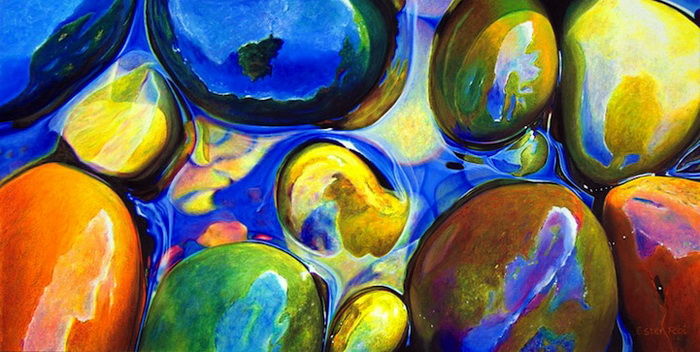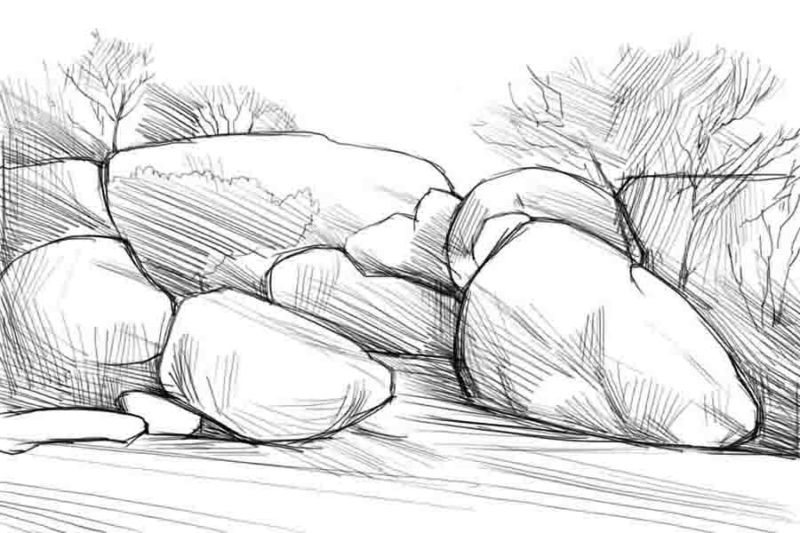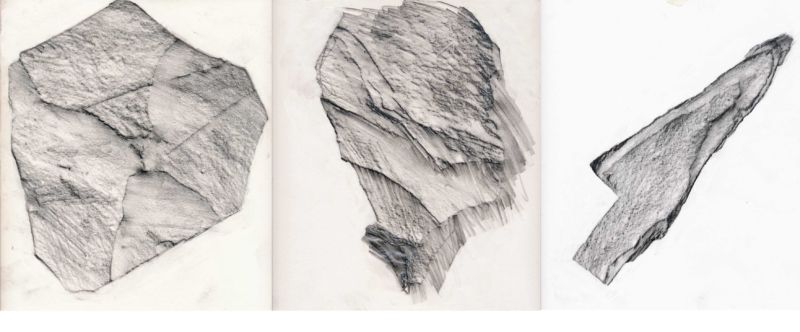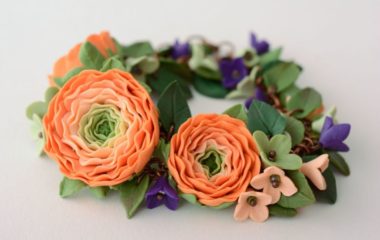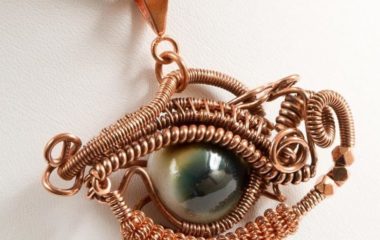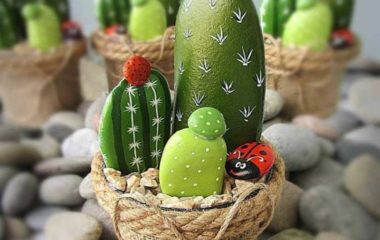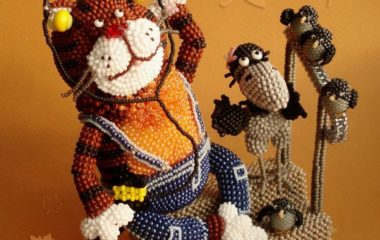How to Draw Stones in Pencil Step by Step: Drawing with Children on Step-by-Step Master Classes
Everywhere on earth, people are surrounded by stones, which in nature are an integral part of the landscape, and in urban development adorn the facades and interiors of buildings.
The huge variety of types of stone, their differences in color and texture requires a certain training of artists, who when depicting landscapes or urban sketches inevitably face the question of how to draw a stone.
Even experienced masters of fine art continue to carefully study the play of light and shadow on the facets of rocks of different rocks in order to paint them in the most realistic way.
Many mineral and rock deposits are distinguished by their color and characteristic chipping edges. These static inanimate objects are sharp rocks, smooth boulders, and faceted gems.
Any of these objects can be the basis for an artwork, design project, or themed children's drawing.
Drawing rocks with children
When creating many artistic images, it may be necessary to use masonry as well as individual pebbles to convey a background, a compositional accent, or to set the scene. Knowing how to draw rocks correctly will help to realistically depict a given theme.
For beginning artists of younger age, assignments on a free theme can be combined with teaching how to correctly represent the shapes of different kinds of rocks. At first, children would be interested in depicting a seashore with colorful pebbles or rocks against which waves beat.
Landscapes with waterfalls are also interesting, where the painted stone makes a wall of boulders and becomes a background for unusual plants and falling water.
The best option for learning to draw rocks is to go out into nature, where children can sketch from nature. Choosing a large stone of interesting form it is necessary to do with him a few sketches, which gradually form its volume form.
To make the stone look like a real one, it is necessary to convey its depth. To do this, children can examine it from different sides, touch it to feel its density and solidity.
When conveying the multi-facetedness of an inanimate object in a drawing, it is necessary to deal with each plane, which reflects light differently and is shaded by other protrusions or objects.
At first it seems like a simple task, as the upper horizontal plane is usually the most illuminated in comparison with the side planes. However, studying the work of the masters, it becomes apparent how difficult it is to work out every crevice, shadow, and penumbra.
Drawing a Large Boulder
Before you start drawing a volumetric stone in pencil, you can take a good look at reproductions from famous paintings with fairy tale subjects, where large boulders are represented in the foreground.
This could be Alyonushka's sister, sitting by the river, or Ilya Muromets, standing in front of a rock with three inscriptions, at the crossroads, the work of the remarkable Russian artist V. Vasnetsov. Drawing on the best of the visual examples, one must mentally imagine the end result of the composition.
Having a supply of simple pencils of varying degrees of softness, you can begin sketching the composition on a sheet of paper. Having drawn the total volume of one or more boulders with a hard pencil, you should concentrate on drawing recesses, cracks, indentations and shadows.
Then begins to create a stroke drawing with softer pencils. Places of light highlights remain white, and the darkest lines emphasize the deep shadow in places of contact with the soil.
When drawing a group of boulders of different sizes, one must pay attention not only to their own shadows, but also to those that they cast on each other. The texture of the surface is first outlined with a hard pencil, and then refined with small dashes made with the softest lead.
This gives the impression of the roughness of natural stone. Very naturalistic look features recesses and chipping on the stone surface, as all of them are unique and emphasize the peculiarities of the form.
Stone is an important element of buildings
In urban and rural development stone is very common. It is part of the decoration of facades in the form of polished, smooth facing or beautifully chipped wild stone.
Sidewalk masonry, memorial steles, and dolmens in public gardens or squares are found in many localities. Stores sell articles of precious and ornamental stones that have their own individual patterns and textures.
In interiors, stone is widely used to make countertops, railings, steps, fireplaces and other design elements. To paint each type of stone, techniques close to the image of complex objects are used.
Before proceeding to create a picture in which there are stones, it is necessary to decide on their kind. They can be of the slate type, sandstone rock, volcanic lava, limestone, granite and marble.
The depiction of rocks or ancient city buildings is often associated with the artist's understanding of how to draw a stone granite, so that it turned out similar to the natural one.
This finishing stone was used to cover the plinths of buildings and embankments, and to pave the roadways of streets. Granite in the nature is distinguished by the rough shape of chips and a complex pattern of small inclusions of transparent and black particles.
Each element of a masonry or cobblestone sidewalk is constructed according to the principle of a three-dimensional object, the lightest and darkest areas are determined on it, and after the distribution on each pebble of its own shadow, you can begin to draw them with small dots and dashes of rough surface.
When the light falls from above and to the right, the darkest areas will be on the left and below, respectively; the lines of contact between the rock and the objects below it should be particularly black.
On the protruding tops of rocks, the lightest areas will be their ends. When applying jagged rock lines, the darkest parts of the side shadows are right behind the sharp chipped rock lines, and then gradually grow to the places of connections with other planes.
Polished granite or marble countertops are depicted with highlights as well as the characteristic divisions and color combinations of these rocks.
Techniques for drawing gemstones
There is a special specific approach for drawing gemstones that are made in a strict cut, such as a diamond or a tutorial stone. It requires a pencil, a ruler, an eraser to erase unnecessary lines, and drawing paper.
In order to depict a gemstone as similar to the original as possible, it is necessary to work with geometric figures. First, it is necessary to draw two ordinary triangles on paper using a ruler, and the second one is inverted and is in contact with the bottom one at the point of convergence of their tops.
On top of the triangles need to draw two trapezoids, so that you get an irregular hexagon. The resulting figure is crossed by two diagonals, and for each area formed by the lines additional turns of planes are added, creating the faces.
All lines are drawn at equal distances from the center of the figure.
When representing a volumetric jewel with a lower part, worked out for inserting in a metal setting, the drawing should begin from the bottom corner, gradually building rays diverging to the top. Symmetrical and equal distances are marked on each of the rays with dots.
From these points, at obtuse angles, lines diverge that must intersect and form faces. All points obtained at the top are joined by a continuous segment, so the surface of the stone becomes flat, and the play of light is created by numerous side shadows and reflections.
Figures are inscribed into the outermost of the resulting sharp triangles, mirroring each other. From the lowest point of the facet, lines leading up to the intersection with the lowest points are shown, and the rhombus must fit in the middle of the lower element.
When further coloring a faceted diamond, shades that seem to shimmer, sparkle and repeat each other in facets drawn in the same tilted planes on a three-dimensional coordinate system will help draw the texture of the stone.
A white gel pen can be used to convey the glare and play of light in a diamond or other gemstone.

